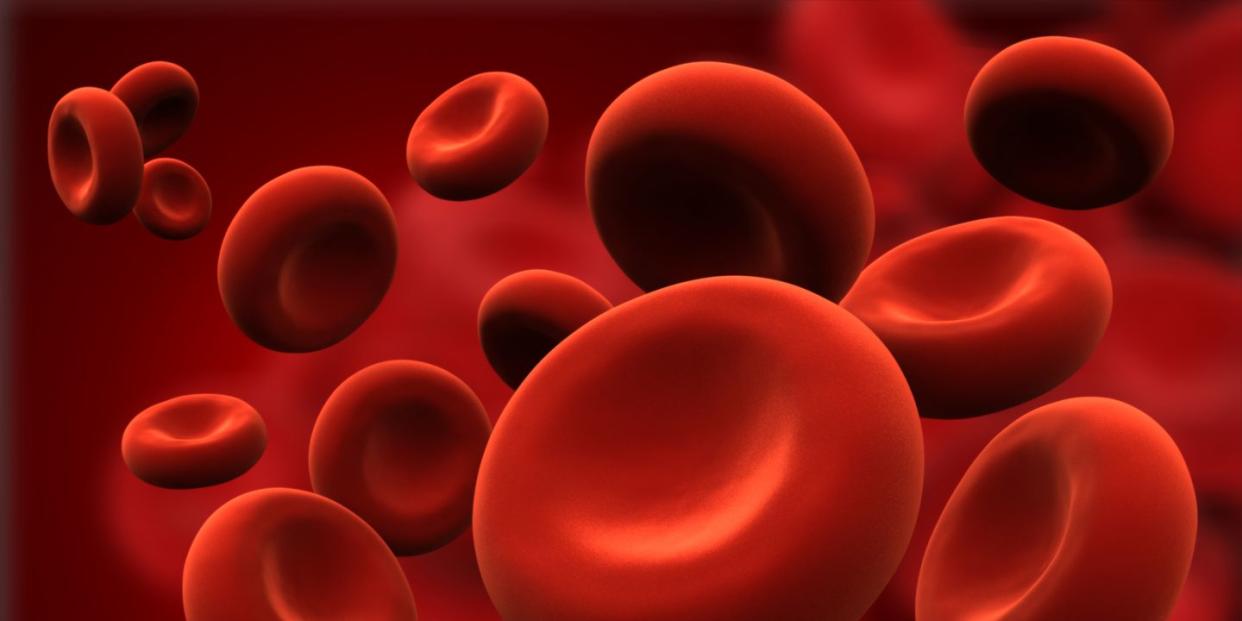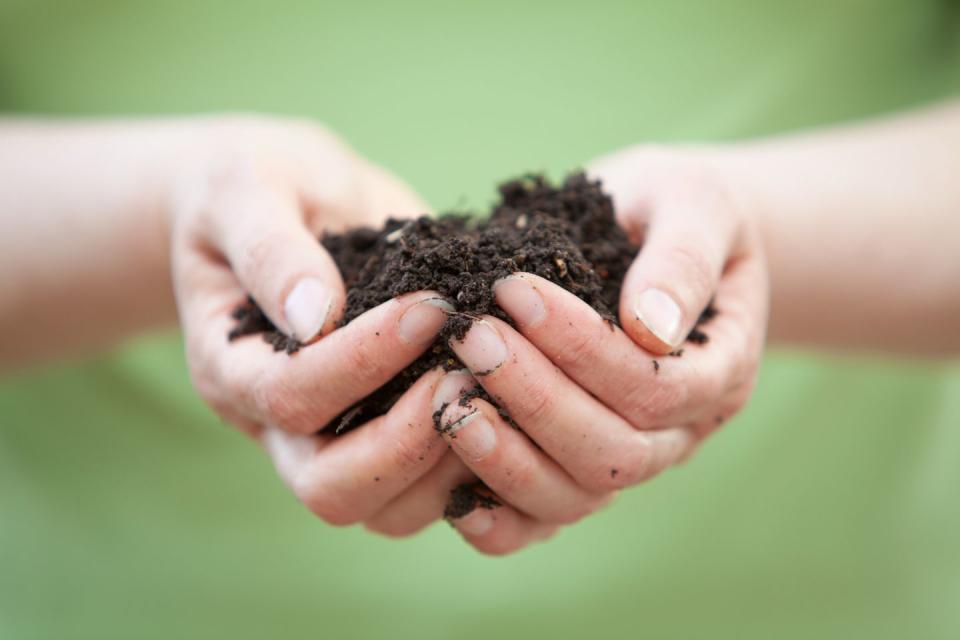6 weird signs you’re not getting enough iron

Iron is one of the most important nutrients in your diet, since it helps different proteins deliver oxygen to your body. But the truth is, much of the world doesn’t get enough of this essential mineral.
'Iron deficiency is the most common micronutrient deficiency worldwide,' explains Kelly Pritchett, Ph.D., R.D.N., assistant professor of sports nutrition at Central Washington University. In fact, the World Health Organization estimates that nearly half of the world’s 1.62 billion cases of anemia—a condition characterised by a lack of healthy red blood cells—circle back to iron deficiency.
That said, most of us shouldn’t have too much trouble getting enough iron through a diet that includes animal products like red meat, fish, and poultry, according to the National Institutes of Health (NIH). Iron inadequacy is a big concern, however, and mainly occurs in pregnant women, young children, women with heavy periods, people who donate blood often, and vegetarians or vegans.
Still, roughly 10 million people in the United States are iron deficient, according to 2013 review of research, and it’s much more common in women than men. True iron deficiency occurs in three stages, with the most severe being iron deficiency anemia, a condition in which there isn’t enough iron in your body to create hemoglobin—a protein responsible for delivering oxygen to your tissues—says Pritchett. This causes your red blood cell count to drop, commonly leading to fatigue, dizziness, pale skin, or shortness of breath.
Your body can do some pretty weird things when you’re severely low in iron. Beyond the common symptoms, here are six unusual signs of iron deficiency to watch out for—and exactly how to make sure you’re getting enough of it.
You have odd cravings for things that aren’t food

If you ate dirt as a kid, you might have been deficient in iron. While researchers are still trying to figure out why, people with severe iron deficiencies often crave non-food items like dirt, clay, cornstarch, paint chips, cardboard, and cleaning supplies, according to the National Heart, Lung, and Blood Institute.
The condition is called pica and can be difficult to catch, mainly because people are ashamed to admit they have these strange addictions. It typically occurs in young children or pregnant women, but case studies show that older adults can experience pica, too. If you do suffer from these non-food cravings, boosting your iron intake can help if a deficiency is present.
Your nails are brittle or spoon-shaped
Although they may seem unrelated to the rest of your body, your nails can actually say a lot about your health. Along with weak and brittle nails, spoon nails—also called koilonychia—can be indicative of an underlying iron problem.
They look just how they sound—the inside of your nail sinks in, leaving you with a fingernail shaped like a spoon. Since spoon nails can also be caused by trauma (like a jammed finger), exposure to petroleum-based solvents, and other issues, the American Academy of Family Physicians recommends doctors do a blood test for iron deficiency anemia when other causes of spoon nails aren’t obvious.
Your lips are dry and cracked
Thanks to harsh winters, a dry room, or a habit of licking your lips, just about everyone knows the pain of chapped lips. But people with iron deficiency may be privy to a specific type of cracking called angular cheilitis, which affects the corners of your mouth.
Those cracked corners can make it difficult to eat, smile, or even shout. In a study of 82 people with angular cheilitis, researchers found that 35 percent of them had iron deficiency. In those cases, treating angular cheilitis on its own—say, with cream or ointment—wouldn’t help. You need to treat the underlying iron deficiency to keep the cracking from coming back again and again.
Your legs never feel still

If you’ve ever sat in a chair and constantly felt the need to move your legs, you have an idea of what it’s like to have restless leg syndrome (RLS)—except people who have RLS feel this way all the time. The feeling has been described as burning, tugging, tingling, or the sensation of insects crawling around inside your legs.
Doctors still aren’t completely sure what causes this condition, but some research suggests low iron levels could be an underlying problem. In fact, one 2013 study of 251 people with iron deficiency anemia concluded that that the prevalence of RLS was nearly 24 percent (or nine times) higher than normal.
Your tongue is oddly swollen
Another not-so-obvious symptom of iron deficiency is atrophic glossitis, also known as a swollen and tender tongue. The tongue will expand to the point that the usual bumps on the surface disappear, making it appear smooth. The swelling can cause problems with chewing, swallowing, or talking.
In a 2013 study of 75 people with iron deficiency anemia, researchers found that nearly 27 percent of them had atrophic glossitis, along with dry mouth, a burning sensation, and other issues affecting oral health.
You’re constantly craving ice
Craving ice is a specific form of pica called pagophagia, according to a series of case reports published in the the journal Pediatric Hematology and Oncology, and it’s one of the most common symptoms of severe iron deficiency.
Although reasons for this craving are unclear, some some experts theorize that chewing ice increases alertness in iron-deficient people (who are typically sluggish and tired) or that it soothes their swollen tongues.
How to get enough iron
If you’ve checked off several of the symptoms above, it may be time to see your doctor—just keep in mind that these are just the bizarre signs associated with iron deficiency. If you’ve noticed you’re more tired than usual, are struggling to catch your breath when you walk up stairs or exercise, get dizzy, or often feel weak, your iron levels could be low.
If you fall into a high-risk group and suspect you’re not getting enough, ask your doctor to perform a blood test. Don’t wander down the supplement aisle until you confirm a deficiency: Popping a pill with too much iron can be dangerous, as it can cause unpleasant side effects, like stomach pain, vomiting, constipation, or even serious health problems like liver damage, says the NIH.
In the meantime, make sure you’re loading up on iron-rich foods. Women aged 19 to 50 should aim for at least 18 milligrams a day (27 milligrams if you’re pregnant), while men can stick to 8 milligrams. You can easily bump your intake by eating animal-based products like oysters, beef, fish, and chicken.
Pair them with foods rich in vitamin C (like a healthy squeeze of lemon on your salad) to boost absorption, Pritchett says. If you’re a caffeine drinker, try to finish your coffee an hour before you eat, as coffee and tea have both been shown to significantly decrease your ability to take in iron, she says.
Pro tip if you’re vegan or vegetarian: Since your body more easily absorbs the iron in meat, you should consume 1.8 times your daily recommended value when sticking to plant-based options. That adds up to 32 milligrams per day for most women. These foods that pack more iron than beef (like beans, leafy greens, and even dark chocolate) are a good place to start.
Additional reporting by Alisa Hrustic.
You Might Also Like

 Yahoo News
Yahoo News 
